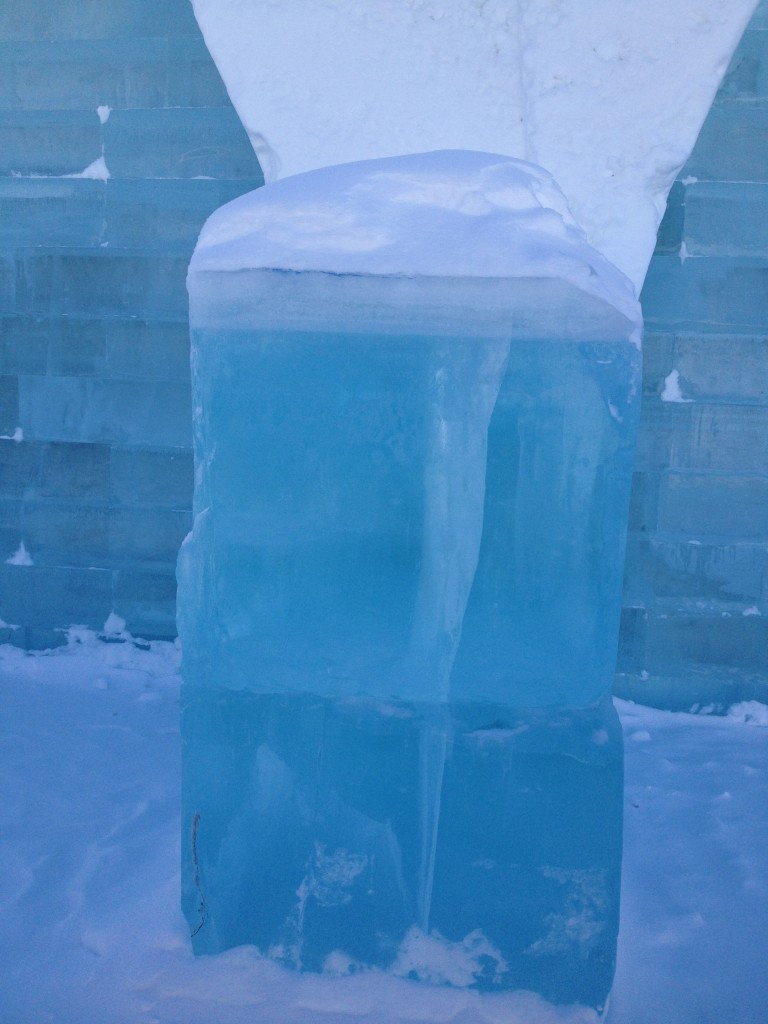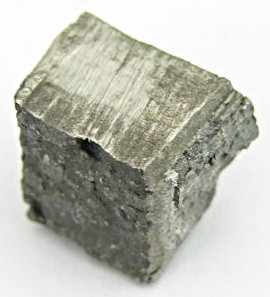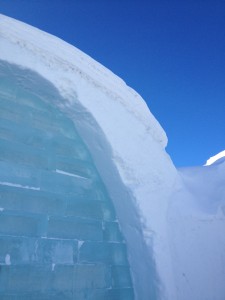Exploring the North – Visible signs of climate change
Almost in the middle of nowhere, where just a few houses stand between trees around the lake, there is kind of a research nest. Scientists from different countries live and work together in Abisko, Sweden, to investigate the impact of climate change in the Arctic region.
That is especially feasible, as the research station is located North of the polar circle. The Arctic region is far more sensitive to climate change than others: While globel mean temperature yet rose by 0.8 degrees celsius, the Arctic already warmed by more than one degree on average.
“If you came here 40 or 50 years ago, you would see that the treeline has risen since then”, says plant ecologist Ann Milbau.
Also the composition of species growing here has changed: mosses do worse, while more grasses growing on the vast ground. But in the last years, researchers suddenly walked on a green moving carpet – made of caterpillars. Temperature in the previous winter did not fall below -35°C, a threshold above which all caterpillar eggs survive. The eclosed moths ate away all leaves from the trees. “There was nothin green here in summer”, Milbau says, “But yet we don’t know, whether this was just an exception or really a sign of climate change.”
Which visible signs of climate change can you see in your environment?
Exploring the North – Not in my backyard
Let’s start with a quick survey: Are you in favor of fewer carbon emissions? Would you opt for renewable energy? Do you support the expansion of renewables? I guess we all agree on this, right? But what would you say to having a wind turbine placed right next to the flowers and trees in your garden? Would you be okay with the presence of a high voltage power line right over your roof? That’s where agreement normally ends. More renewables, yes – but not in my backyard.
That’s a major problem many countries promoting energy transition have to confront at some point. And that’s the case in Sweden as well. Swedes simply love their nature. Many parts of the sparsely-populated country are natural reserves and authorities usually rank their preservation higher than economic profit. This attitude is so pervasive that nobody even thinks of questioning it. The country – which meets 50 percent of its energy needs from nuclear power and the other half from hydro power – has great potential to increase its water power capacity. It’s even exporting the energy.
But at the same time, even energy companies like Vattenfall, already operating several water power plants, don’t attempt to build new ones as they know there is likely to be resistance to new plants that “would simply spoil the landscape.”
However, Europe’s largest on-site wind park is to be built in Sweden. By 2024, Swedish company Svewind plans to build 1,100 wind turbines which together are meant to meet 13 percent of Sweden’s energy demand. So far, 12 turbines are up and running. The ridge 60 kilometers away from Piteå has “the best wind conditions you could possibly have”, says Kenneth Bergquist who is responsible for setting up Svewind’s turbines. A large overhead power line is also located close by so that the energy produced can be further distributed. 24 additional turbines are planned on the site, permission has been granted for 340 in total. But the company has already run into trouble with its first few turbines though they are located in an area, where “very few people live”, says Bergquist.
But the ridge with its clump of turbines is located on the route that reindeer herds normally take. “We don’t know how the reindeers react”, says reindeer herder Patrick Lundgren. It might be that they hide in the forest and don’t dare to pass by or deviate from the usual routes, he says. “It took four to five years for the government and the company to understand our problem. But now we have found a solution. We don’t have to first prove that there is a problem anymore. We talk to each other and have to agree.” The reindeers now have a safe harbor apart from the ridge and the company has pledged financial support for additional food if needed. “May be in 10 years the animals get used to the turbines,” Lundgren says.
What do you think? Should people just get used to turbines and powerlines in their immediate surroundings and accept it as necessary if they want renewable energy? Would you leave your home and move to another place?
Exploring the North – rare earths crucial for renewable energy
Below the Scandinavian snow cover, there are even more resources (apart from ice) that make the North special. Mining is a big deal in this region, especially in Sweden. From copper, iron ore to gold, the country is rich in minerals and metals – in fact, it is the largest mining region in Europe. So it’s not that surprising to find some real precious treasures in the Swedish ground – rare earths. They are not only important for smartphone chips and laptop processors, but also play a crucial role in renewable energy technology and thus in energy transition, helping the world to emit less CO2.
These non-renewable resources for renewable energy technology have strange names – dysprosium can be found in magnets that are used to run generators in wind power stations. Ytterbium is used for tubes in reactor technology, neodymium is important for the engines of electro- and hybrid-cars. Terbium can in turn be found in semiconductors important for building solar cells.
They are all found in Norra Karr and Olserum, two (potential) mining sites in Sweden. They are owned by the Canadian mining company Tasmet, which has applied for permission to mine in Norra Karr and is exploring the site in Olserum. Both are the only (so far known) sites in the European Union, where rare earths can be found. So far, the largest producer is China – producing 97 percent of the world’s rare earths in 2009. These metals are used all around the world and demand is projected to rise from 130,000 tons per year in 2012 to 186,000 tons in 2015. One already senses where problems might arise.
At the end of 2010, China restricted export of rare earths for the first time, putting the EU’s energy strategy at risk. What’s more, car manufacturers such as General Motors or Toyota searched for (and claimed to nearly have found) alternatives to become more independant. But so far, there don’t not seem to be alternatives that are feasible on a large scale. Which is why, even small deposits are still lucrative to mine and researchers are keen on finding new ways of mining.
Now you might think this isn’t my problem but rather that of big manufacturers. Well, you are almost right. We all have small earth desposits in old computers, TV monitors and outdated mobile telephones stored in our cellars and attics. Aware of possible shortages of the metals, the electronics industry is aiming to develop feasible recycling methods for rare earths that are still not in place.
So, if some day we do have these proper recycling methods in place, keep your attic-treasures in mind…they just might contribute to something big:
Exploring the North – treasures under the ice cover
Our Global Ideas reporter Gianna Grün recently made a trip to the Arctic Circle and has written about tracking reindeer, an encounter with Sami herdsmen and sleeping in a hotel made entirely of ice. Check out her latest article from the freezing North.
What looks like a lovely winter wonderland landscape is in reality a perfect source for building material. No, I’m not talking about the few trees on the horizon – the resource slumbers below the snow cover! Hidden from the eye, the Torne river flows below the snow. Well, at least the part that’s not frozen. But the more interesting part is the ice cover. In March, i’s thick enough for ice block harvesting to begin.

Ice blocks of such a size are hacked out of the Torne river in March and April each year. One block weighs 1.8 tons.
Some 2,500 of such 1.8 ton blocks are cut out in March and April to build a new hotel made of ice near Kiruna, Sweden. When spring arrives in other parts of the world, the ice is in perfect condition for building a new hotel from scratch next winter. The ice is at least 80 centimeters deep and crystal clear due to the high water quality of the Torne river and its perfect velocity and depth. Upstream, the water flows too fast and stirs up sediment from the river floor. Downstream from here, the water is too still and lacking in oxygen so you get milky ice.
Though it is quite cold up here in the North, building doesn’t begin right after harvesting. While the old ice hotel is literally melting, the 5,000 tons of newly harvested ice are stored over the summer. From April until October, the storage hall is cooled to minus six degrees Celsius. That requires almost 240,000 kilowatts of energy, which comes from renewable sources. Between November and March, no cooling is required since the outside temperature is cold enough. Thanks to the massive blocks of ice and the isolation, the entire place stays cool enough.
When construction begins in winter, the ice hotel builders arm themselves with electric irons and smoothers. Well, not for cleaning their teeth or ensuring wrinkle-free shirts, but for the fine tuning. After chain saws, tractors, snow cannons, snow throwers, wheel burrows, spades and chisels have got the basics in place, the finer details, embellishments and sculptures are readied to give the whole space a cozier feel despite the cold.
It takes six to eight weeks to set up the whole hotel. Apart from ice, a special mixture of ice and snow called “snice” is used as a kind of mortar. In addition, some wooden structures are built in the ice to support the very high and steep arches and a few reindeer skins cover some surfaces.
Apart from offering visitors the unusual experience of sleeping in a room surrounded by ice, the hotel is also trying its hand not just at cutting its carbon output but actually becoming CO2-negative. So far, it’s reduced overall energy consumption by 20 percent. But in future, it aims to cut CO2 in its immediate surroundings by an amount that exceeds its overall energy consumption.
Do you know of similar projects that use building materials lying right at the doorstep, without harming the environment?
Meeting the Arabian stallion in Lebanon
 Can you imagine pounding a race track amid temperatures of 40 degrees Celsius? That’s no problem for the purebred Arabian stallion as our reporter Dan Hirschfeld found out while filming in Lebanon.
Can you imagine pounding a race track amid temperatures of 40 degrees Celsius? That’s no problem for the purebred Arabian stallion as our reporter Dan Hirschfeld found out while filming in Lebanon.
Horse racing is a popular sport in Lebanon with annual races held in Beirut. And the country is also home to the famed Arabian horse, one of the oldest breed of horse. It’s believed it was developed by the Bedouins of the Middle East specifically to last long distances. The powerful beasts, characterized by their flowing manes and proud heads, are used in endurance riding in equestrian sport as well as on traditional race tracks.
Dan Hirschfeld, who is doing a feature on a smart electricity grid to counter chronic power cuts, met a horse breeder near Tripoli in northern Lebanon, who has several Arabian horses.


















Feedback